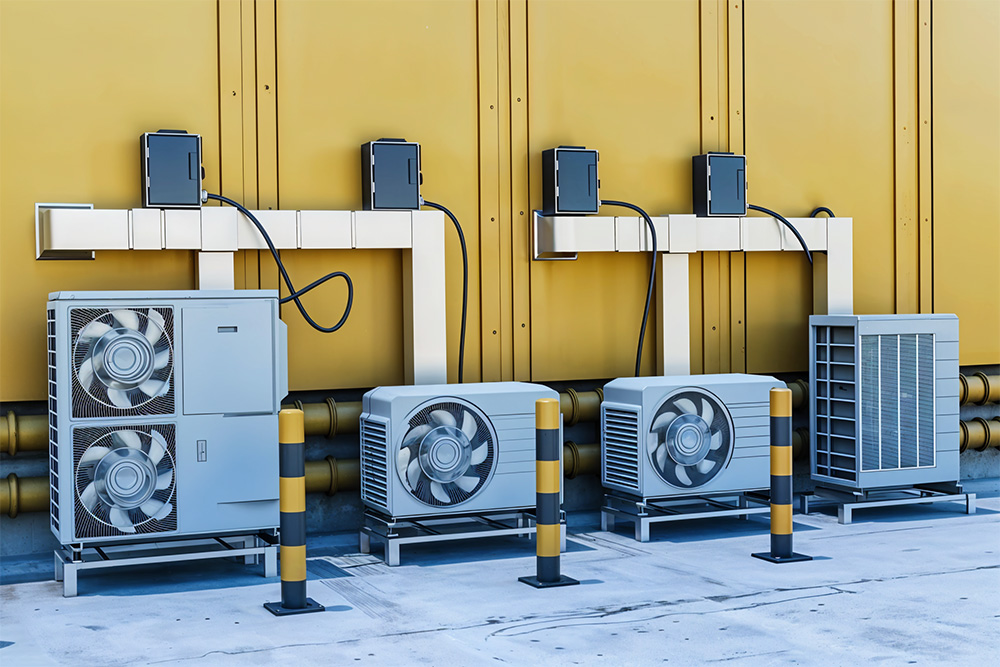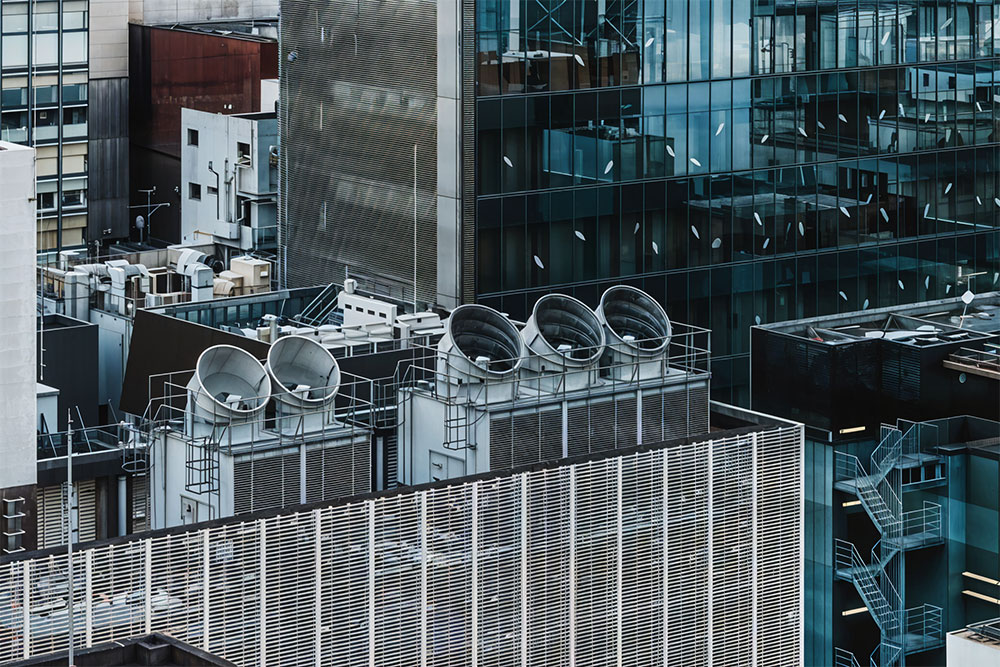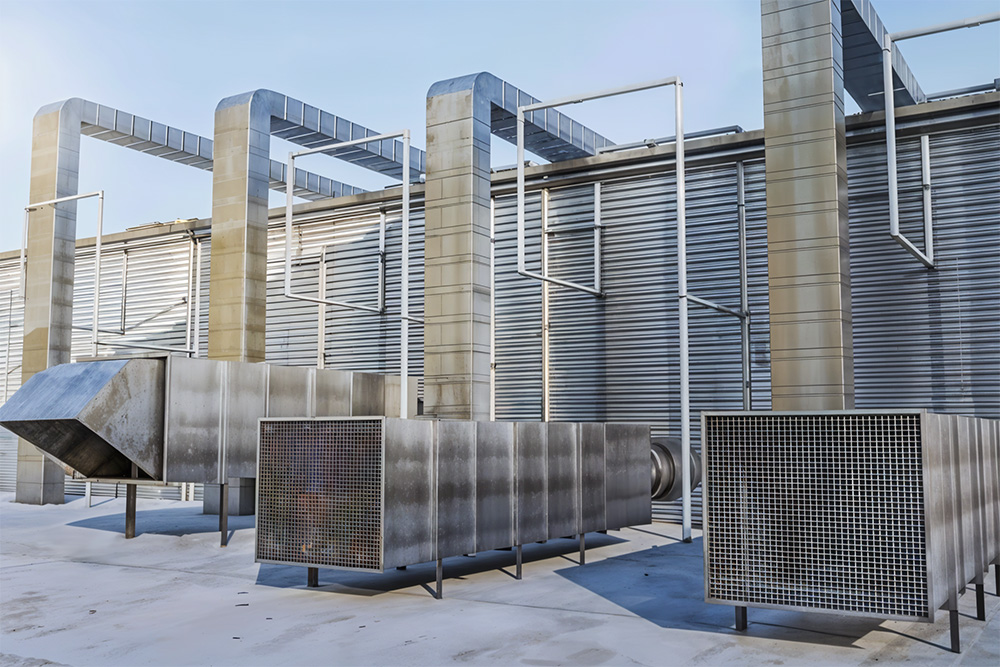Coping with the summer heat in Dubai can be challenging, and air-conditioning is essential to stay comfortable. However, it can be a costly solution. In Dubai, Homeowners and tenants have two main options to consider: district cooling and chiller-free apartments.
Deciding between these options can be overwhelming for property buyers and renters, as each comes with its advantages and disadvantages. If you’re unsure between district cooling vs chiller-free apartments, here’s a detailed comparison to help you decide.
- What Is District Cooling in Dubai
- What Is Chiller-Free in Dubai?
- Chiller-free Vs District Cooling in Dubai – Which One Is Better?
- FAQs
What Is District Cooling in Dubai
District cooling (DC) in Dubai began in 1999. It provides an environmentally friendly and cost-effective cooling system for all properties. Emicool, Empower and Tabreed are the major service providers.
Emaar, a top real estate developer, also offers district cooling in some communities.Empower serves Ghoroob Mirdiff, Al Khail Gate, Palm Jumeirah, Jumeirah Beach Residence (JBR), Jumeirah Lake Towers (JLT) and Dubai Silicon Oasis (DSO). Emicool serves Dubai Investment Park (DIP), Dubai Motor City and Dubai Sports City.
Pros
- It is energy-efficient due to its configuration and heat rejection method
- Advanced technology and processes make district cooling greener. It uses alternative fuels, making it environmentally friendly
- District cooling saves peak load with thermal storage capacity, reducing monthly electricity bills
Cons
- District cooling systems need higher installation costs due to a complex underground system
- Tenants must pay the DEWA bill for units with district cooling. For chiller-free units, landlords usually pay the bill

Service Charges of District Cooling
Emicool and Empower are the top district cooling companies in Dubai. The service charges of district cooling and chiller-free apartments vary a lot. For instance, charges for district cooling depend on consumption and demand, according to Empower.
Here are the updated rates for district cooling:
- Consumption Rate: AED 0.62 per Ton of Hours (TRH) consumed, measured by meter
- Capacity Charge: AED 750 per Ton per year, distributed and billed monthly
- Security Deposit (Refundable):
- Studio Apartments: AED 1,000
- 1-Bedroom Apartments: AED 1,500
- 2-Bedroom Apartments: AED 2,000
- 3-Bedroom Apartments: AED 3,000
- Connection Charge per TR: AED 1,500, paid by the first landlord
- Connection Charge Fixed: AED 250, paid by the customer/tenant
- Meter Charge per Month: AED 25, paid by the customer monthly
- Design and Construction NOCs: AED 2,000, paid by the building owner during design and construction
These charges include maintenance costs and disconnection fees. Maintenance costs are AED 30 per month or AED 50 quarterly. Disconnection charges are AED 1,000 for residential units and AED 2,000 for commercial units.
What Is Chiller-Free in Dubai?
The concept of chiller-free in Dubai differs from district cooling. This is all included in the cost of living in Dubai.
Unlike district cooling, where tenants pay for cooling charges, in chiller-free arrangements, the landlord covers the entire cost of air conditioning. Tenants in chiller-free apartments in Dubai only pay for their electricity consumption, excluding air conditioning.

How Does Chiller-Free Work in Dubai?
Chiller-free houses in Dubai do not require tenants to pay the air conditioning bill. Instead, residents benefit from air conditioning without worrying about the associated costs. The cost of chiller-free systems depends on usage, recorded by a meter on the premises.
In chiller-free setups, a separate chiller system is installed on the roof and connected to the building’s main electricity meter. This setup ensures that cooling charges go directly to the landlord and do not appear on your DEWA bill.
Pros
- Chiller-free bills are not included in the tenant’s DEWA bill: Under Dubai’s tenancy laws, the landlord covers maintenance costs and chiller-free unit bills. Tenants only pay rent and their DEWA bills, making it an ideal arrangement for them
- Chiller-free systems can be installed on the roof and have a simple design, which reduces upfront costs compared to district cooling systems
- The system has fewer parts, reducing wear and tear, and making maintenance costs lower
Cons
- While beneficial for tenants, landlords face higher bills as this system is less energy-efficient
- Concerns over resource depletion and global warming have led to a decline in the use of chiller-free systems due to their reliance on refrigerants
Chiller-free Vs District Cooling in Dubai – Which One Is Better?
When seeking an apartment in Dubai, understanding living expenses is crucial. It’s essential to compare district cooling and chiller-free systems. While district cooling is energy-efficient, reducing peak load charges, chiller-free options have lower maintenance and installation costs.
Tenants often prefer chiller-free apartments as landlords cover the chiller bills. However, in some cases, landlords may adjust rent while tenants pay the DEWA bill based on chiller-free usage. Consider annual costs and include clauses in the tenancy agreement to avoid conflicts later.

FAQs
With District Cooling, tenants pay for cooling based on usage and capacity, with additional meter and maintenance charges. Meanwhile, tenants do not pay for air conditioning in chiller-free apartments; the landlord covers these costs, which are included in the rent.
District cooling is environmentally friendly due to energy efficiency and the use of alternative fuels. In contrast, chiller-free systems are less sustainable due to reliance on traditional refrigerants.
District cooling has higher upfront costs and complex infrastructure, but maintenance is handled by the service provider. On the other hand, chiller-free systems have lower upfront costs and simpler design, but landlords cover all air conditioning expenses.
These were all the differences between chiller-free vs district cooling apartments. Both have different systems and costs. In the quest for an apartment, be wary of the hidden costs of renting in Dubai. Considerations like chiller bills included in rent (KYR) and unforeseen expenses can impact your budget.
Keep in touch with the Property Finder blog for insights on systems that enhance your lifestyle and cut down on living expenses.